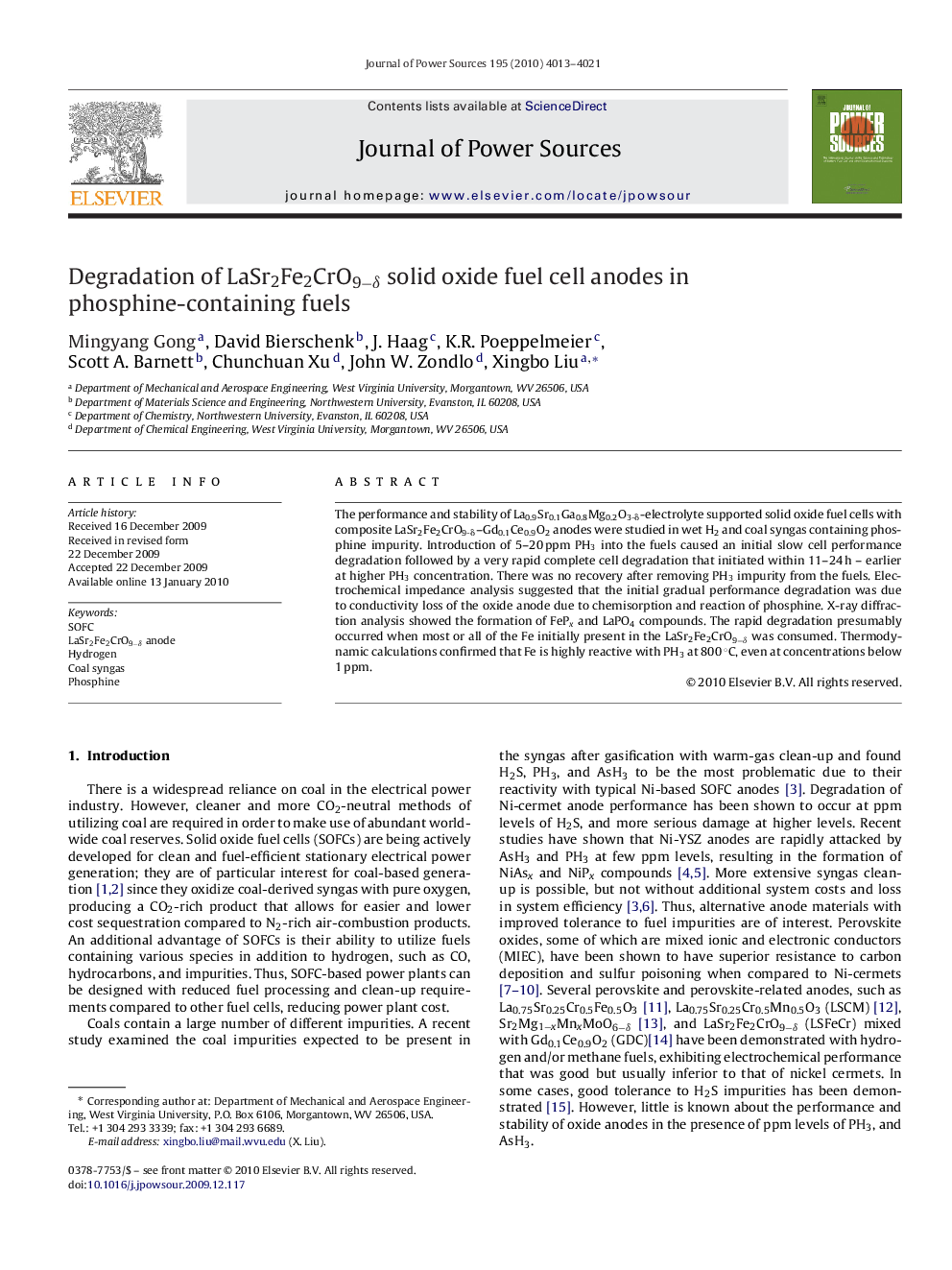| Article ID | Journal | Published Year | Pages | File Type |
|---|---|---|---|---|
| 1290323 | Journal of Power Sources | 2010 | 9 Pages |
The performance and stability of La0.9Sr0.1Ga0.8Mg0.2O3-δ-electrolyte supported solid oxide fuel cells with composite LaSr2Fe2CrO9-δ–Gd0.1Ce0.9O2 anodes were studied in wet H2 and coal syngas containing phosphine impurity. Introduction of 5–20 ppm PH3 into the fuels caused an initial slow cell performance degradation followed by a very rapid complete cell degradation that initiated within 11–24 h – earlier at higher PH3 concentration. There was no recovery after removing PH3 impurity from the fuels. Electrochemical impedance analysis suggested that the initial gradual performance degradation was due to conductivity loss of the oxide anode due to chemisorption and reaction of phosphine. X-ray diffraction analysis showed the formation of FePx and LaPO4 compounds. The rapid degradation presumably occurred when most or all of the Fe initially present in the LaSr2Fe2CrO9−δ was consumed. Thermodynamic calculations confirmed that Fe is highly reactive with PH3 at 800 °C, even at concentrations below 1 ppm.
